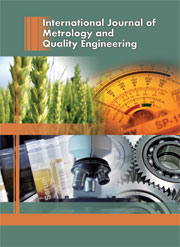No CrossRef data available.
Article contents
From opacimetry to nanoparticle characterization: regulation, research and new national standards for exhaust gas analyzers in Europe
Published online by Cambridge University Press: 19 April 2010
Abstract
The measurement of the car exhausts plays an important role in many countries all over the world. Often, national legislation lays down limits to preserve the environment and, in addition, special regulations exist for the metrological control of exhaust gas analyzers. In the 90s, opacimetry was introduced as a fast and simple measuring technique to qualify the exhaust systems of cars equipped with Diesel engines. However, for modern cars equipped with soot reduction systems, conventional opacimetry reaches its limits. Therefore, new exhaust gas analyzers enter the market and, in parallel, the regulations in many countries will be modified. In terms of traceability, corresponding national standards must be developed for setting up a traceability chain for this new kind of instrument. For this reason, research is carried out with the aim of implementing particle counter standards for aerosols. In some countries, new set-ups are under construction which may lead to future intercomparisons. Today thousands of opacimeters are still in use, yet new instruments should comply with some of the given requirements in order to allow a smooth transition from one technique to the other. In other words, new instruments should combine the principles of two different “worlds”: opacimetry and particle counting. The purpose of this paper is to give an overview of the development of new exhaust gas analyzers as well as of new national standards and new regulations in this field.
- Type
- Research Article
- Information
- International Journal of Metrology and Quality Engineering , Volume 1 , Issue 1 , 2010 , pp. 17 - 20
- Copyright
- © EDP Sciences 2010




